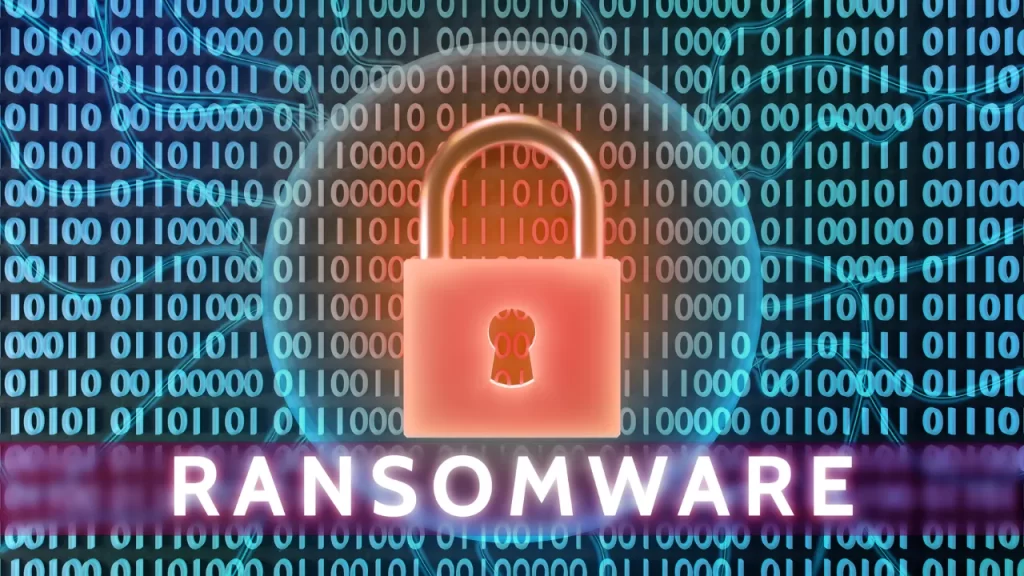A backdoor attack is a vulnerability that facilitates cybercriminals to get unauthorized access to your system or network. Your sensitive data and files are leaked and this attack goes undetected for weeks or even months.
Explaining Backdoor Attack

In simple words, a backdoor attack is a remote access to your system or device with no authorization. You can understand the term with a simple example: a thief uses your home backdoor to get into your assets and steals them without letting you know. The same goes for backdoor attacks in the world of the internet. Here the cyber attackers use security breaches as a backdoor to access and steal your valuable information out of your system.
There are several solid reasons behind backdoor attacks including attractive incentives and payments in return. The attack is made with a special intention which may include:
- Surveillance
- Sabotage
- Data theft
- Account Hacking
- Injecting malware
How are Backdoor Attacks Attempted on Big Companies?
The issue of backdoor attack is not limited to ordinary people, world-renowned companies have experienced it quite often:
1.SolarWinds
This incidence of a backdoor attack is considered a big attack. It became the target of this attack in 2020 and the hackers stole important data. The data belonging to the US government was at the mercy of hackers for almost a year.
2. Microsoft Exchange
In the second example, a renowned company named Microsoft Exchange fell prey to a backdoor attack in 2021. The attackers spread ransomware through backdoor attacks and got hold of exchange servers.
3. WordPress
WordPress was also a target of a backdoor attack in March 2021. This is a popular company and millions of organizations like Walt Disney Company, Microsoft News, BBC America, and more rely on it for their website management. Here the hackers were able to feed a remote code into an edit of the PHP script.
How Does Backdoor Attack Work?
The function and process of a backdoor attack depend on the kind of system and the specific intention of the hackers. Most commonly hackers use malware or backdoor-specific software to enter into a system. Let’s see these two elements in detail:
1. Backdoor malware

This is commonly explained as a Trojan. In the first place, a user takes it as an unidentified program as it disguises its real intentions of delivering malware, stealing data, or opening up a backdoor on your system.
These are a must-have tool in the toolkit of hackers and cybercrime. They can take on many forms and often come to your system like an email attachment or file download, and deliver any number of malware threats.
The attack is lethal as Trojans function as the real worm or virus infecting and spreading to other systems without any additional commands from the cybercriminals that created them.
2. Built-in or proprietary backdoors
This is rather an unintentional entry point left ajar by the software developers and application owners. The intention is to have an emergency entrance point to fix a software bug, or any other issue coming in the software. In most cases, these backdoors are made secure by the developers to prevent any hacking attempt. But in some cases, when these are left open to access, the hackers benefit from this opportunity.
How Can You Identify Different Types of Backdoors?
Backdoors show in several different forms. A few of the most common types include:
1. Trojans
These are malware files disguised as harmless software updates or taking any other form that is difficult to identify at first glance. These files or software often ask you for certain permissions which consequently provide hackers remote access to your system.
2. Rootkits
This is a rather advanced form of malware used for backdoor attack. It works secretly within your system. You remain unaware of its presence while it gets root-level access to perform several malicious tasks like downloading virus files or monitoring your device activity. This is very dangerous as it is nearly impossible to be identified due to its disguising features.
3. Built-in backdoors
These are maintained within a software or application in the form of default accounts. These are designed with no negative intention. Still, on several occasions, these backdoors are exploited by hackers and let them intrude easily within your system.
4. Web shells

These web shells are also used as a backdoor to gain remote access to your system by hackers. These web shells are specifically added within the system to get user input and execute it within the system terminal. These backdoors are installed by system and network administrators but these are sometimes used by hackers to do malicious tasks.
5. Password cracking tools
Some password-cracking tools are used as backdoors to get access to your system and take hold of your accounts and software credentials.
6. Web applications and software
This is also called supply chain exploits. Whenever you use thyroid party apps and software use them with your logins. Your system is at stake. Your login credentials are sometimes used by hackers when you log in to some malicious apps unknowingly and grant them access to your system.
7. Covert channels
All the networks and network systems hold a safe mechanism of protocols that is used to flow data from one end to another. This is a safe and legitimate way for data communication and traders. Somehow the other hackers can use this way for their malicious purposes and make a stealthy channel. They use this covet channel by embedding data in network packet headers and exchanging your system information.
How Can Backdoor Attack Affect You? Risks and Dangers
After understanding the nature and types of backdoor attack, it’s time to know the actual harm they may cause to your system and data. This kind of back door attack is extremely dangerous as they can take on any form and you are unaware of their presence within your operating systems. Let’s understand these risks in detail:
1. Cryptojacking
This is a kind of backdoor attack where a hacker uses your operating system for crypto mining. This kind of attack is possible on all kinds of devices.
2. Malware Infection
During this backdoor attack, the hackers try to intrude into your system and spread malware unknowingly. This activity is performed without the user’s consent. This is so strong that it can even capture your screen activity like keystrokes, and audio or video files.
3. DoS attacks
During this kind of backdoor attack, the hackers flood the targeted operating system with internet traffic leading to its crash.
4. Ransomware

During this activity, the hacker accesses your operating system data and locks it for his use. The attacker consents to unlock your device in exchange for some payment. The attackers may also attempt to attack other vulnerable devices and ask for ransomware.
5. Spyware
This is also one of the unauthorized attacks on your systems. During this backdoor attack, the hacker grabs all the data from the targeted device and uses it without the legitimate user.
This is another malicious kind of backdoor attack where the hacker sends a deadly virus in the form of some benign software install update to an email attachment. Once hacked the hacker controls your system remotely.
What are the Attack Vectors Used To Install Backdoors
1. Federated learning
It is a federated machine learning framework and the models are trained on edge devices. As these edge devices have limited communication with the centralized servers, this increases the chances of embedding malicious data in the open-ended systems.
2. Hardware
In some cases, the hackers are found to use modified chips, processors, hard drives, and USBs to create backdoors.
3. Internet of Things (IoT)
These include using security devices like security cameras, drone cameras, and other smart devices as backdoors. These devices are easy to crack as they often have vulnerable passwords.
4. Island hopping
Here the data theft is done within small organizations attached to big organizations. The main target is the large organization system data.
5. Phishing
These attacks look to be some legitimate entry into your system, however, it’s entered with malicious intent.
6. Steganography
This kind of malware attacks your system while hiding in some corrupt image file.
What are the Best Ways to Protect Backdoor Attack?
There is little that you can do to prevent the backdoor attack. Still, there are some things you can practice to protect against these attack to some extent:
1. Use Your Login Credentials Carefully
Do not use your passwords in public or office operating systems. Also, be careful to click or download suspicious links and software. These may contain malware and grant access to hackers.
2. Report Suspicious Activities
Whenever you find your device behaving strangely like it’s using its storage extraordinarily, your internet speed starts lagging or the system shows slow performance, take action. Report this activity to superiors within your organization.
3. Try Using a Quality VPN
Whenever you have to use public wifi or the internet, always use a VPN to protect your credentials. Using public hotspots makes your devices and systems vulnerable to hackers.
4. Make Your Passwords Complex
Whenever you create an account with some software, use a complex password including alphanumeric numbers, special characters, and unique combinations. Never store your password on your device. You can use password managers for this purpose.
5. Use Firewalls
Always use hardware and software firewalls to keep your devices protected.
6. Antimalware
There is some anti-malware software available to protect your devices from backdoor attacks.
7. Honeypots
This is an interesting kind of protection against backdoor attacks. These work as a fake trap to attract hackers. These protect your actual system from malware attacks.
8. Network monitoring
Try to use quality protocols for system monitoring. It helps protect the malicious traffic and keep your system secure.
9. Allowlisting
This is another security measure to protect against suspicious attacks and entries in your system.
Use allow listing to avoid untrusted software and only allow trusted user access with proper authentication. Choose applications and plugins with caution, as cybercriminals often hide backdoors in free applications and plugins.
6. Stay Alert About Activity
Whenever you notice unusual network traffic over your device, do take necessary protective actions like changing your passwords or removing your important files from the device.
Conclusion
The backdoor attack is a common issue. Your device and data both are controlled by hackers who use it for their malicious purposes. that is both risky for your device and your data. This issue has hit several big organizations and hijacked their security walls. There is no ultimate solution to protect against this attack. However, you can make some precautionary decisions like protecting your passwords, enabling firewalls, and using VPNs for extra layers of protection.
FAQs
1. How can you explain backdooring?
This refers to an authorized or unauthorized interruption within your devices and operating systems. This intrusion is possible in any software, application, or network system.
2. What kind of backdoor attack is the most common?
Remote File Inclusion is the most common backdoor attack reported by the users. The hackers get access to a vulnerable device and export data from the hacked device.
3. Is backdoor software?
Backdoor programs are applications and hackers exploit this program to access the operating system remotely. This program is installed in both software and hardware components.




